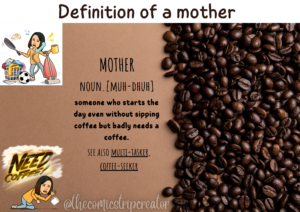76 Years of Independence: Examining the State of Indian Women
76 Augusts ago, in his famous Tryst with Destiny speech, the first Prime Minister of India said:
The service of India means the service of the millions who suffer. It means the ending of poverty and ignorance and disease and inequality of opportunity.
Pandit Jawahar Lal Nehru

Now, as we mark our 77th Independence Day, overshadowed by the violence in Manipur, these words echo as a poignant reminder. A reminder that the promise of equality, especially for the women of India, is still far from being realized.
Or is it?
Is the inequality as stark as some would like us to believe? Or has completely disappeared as still others prefer to believe?
We, humans, love our drama and conflict, be it life, country, politics, or entertainment. As Hans Rosling said in his iconic book Factfulness:
Human beings have a strong dramatic instinct toward binary thinking, a basic urge to divide things into two distinct groups, with nothing but an empty gap in between. We love to dichotomize. Good versus bad. Heroes versus villains. Dividing the world into two distinct sides is simple and intuitive, and also dramatic because it implies conflict, and we do it without thinking, all the time.
Hans Rosling, Factfulness
So, I want you to keep your logic hat on as you read further, bearing in mind the power of nuance over the simplicity of binaries.
What seems to be working for Indian women till now
Data from the National Family Health Survey (NFHS) 2019-21 reveals that, for the first time since Independence, India now has 1020 women for every 1000 men. Nevertheless, the precarious fate of the girl child is reflected in the disquieting sex ratio at birth – 929 girls for every 1000 boys.
A word of caution: NFHS data, while indicative of general trends, may not offer a comprehensive picture due to its limited coverage, in comparison to the Census data.
The progress is evident in the rising literacy rate amongst women, aged 15-49 years, now at 71.5%. Also, heartening is the fact that the proportion of women receiving 10 or more years of schooling has risen to 41% from 35.7% in 2015-16.
But let’s not gloss over the harsh reality—these figures remain eclipsed by their male counterparts.
What I found personally most disheartening was the stark digital divide. A mere 33.3% of women aged 15-49 have ever accessed the internet, as opposed to 57.1% of men. In the age where the internet is synonymous with empowerment, this disparity hampers women’s access to knowledge, power, and freedom.
What Indian women need going forward
Despite evident improvements in key areas such as literacy rates, fertility rate, child marriage, and family planning, the gender gap continues to loom large, underscoring the urgent need for concern and action.
So how do we advance from here?
In line with Maslow’s hierarchy of needs, we now focus on the next level.
We need to deliberate on how we nurture, nourish, and empower them. How do we ensure that they get opportunities equal to the boys and men their age? How do we ensure they excel in every field men have entered, and then some more?
A Shift in Mindset is Imperative
We, as a nation, must embody an ethos of equality, transforming lofty ideals into tangible actions. Empty words and promises will no longer suffice.
A recent Pew Research Center survey found that eight in ten Indians surveyed say it is very important for women to have the same rights as men. That both men and women should make financial decisions in the family (73%), take care of the children (62%), and earn money (54%). Or that women make equally good or better political leaders than men.
Yet, when it comes to practice, a stark contradiction emerges.
A disturbingly high percentage of Indians, almost 90%, agree that a wife must always obey her husband. Equally disconcerting is the fact that women endorse this patriarchal notion almost as much as men. And in a scenario of job scarcity, the majority still opine that men should have more rights to jobs than women.
Women need their freedom, not just independence
Independence and freedom are not synonymous. While independence is political, freedom is personal. Independence means the right to govern ourselves whereas freedom means the power to make choices, voice opinions, and move without fear. It’s about breaking free from the socio-cultural norms that cage their spirit.
For Indian women, independence was achieved 76 years ago, but true freedom remains elusive. The chains of patriarchy, inequality, and gender discrimination still weigh heavily. They need the freedom to dream, learn, to work, and to lead. Without being told what to wear, where to go, and how to discern.
True liberation lies beyond mere constitutional rights and statistical numbers of sex ratio, literacy rates, and financial prowess. It encompasses the personal freedom to dream, aspire, and simply be. But that demands a seismic shift in societal mindsets and systemic practices, translating the abstract ideals of equality into concrete, lived realities.
As we unfurl the tricolor this Independence Day, let’s make a new commitment—to empower the women of India, not just with independence, but with the fundamental freedom they rightly deserve. For it is only when every Indian woman experiences this freedom, will our tryst with destiny truly culminates into a tryst with equality and freedom.






/shethepeople/media/media_files/QW5X15ZIvugtdtfkAHEQ.png)


